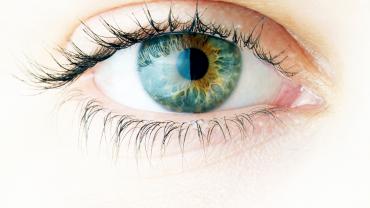
The power possessed by the eyes is almost incomprehensible.
These organs are among the smallest in the human body and yet they perform some of the most accomplished tasks. They communicate without words interpret beauty and expression recognize fear and danger gather information direct daily decisions and yet we often take them for granted unless their health is threatened. We expect them to function optimally each day but we rarely put forth the effort to maintain their health. They are ambushed daily by ultraviolet radiation through the sun electronic devices and LED lights but because we cannot visibly see this enemy we often neglect to take adequate precautions against it.
What is Ultraviolet Radiation?
Ultraviolet (UV) radiation is unquestionably one of the chief enemies of eye health. These highly energetic wavelengths fall just outside the visual spectrum and are divided into three types of UV radiation with increasing health risks. UV-C radiation poses few health dangers since most of it is absorbed by the ozone layer in the atmosphere. UV-B radiation is only partially blocked by the ozone later and therefore some protection is required. UV-A radiation is the most dangerous not only because it includes the highest energy wavelengths but also because it not absorbed by the ozone layer. UV-A permeates our daily living environment.
Anatomy of the Eye
To better understand the negative effects of radiation on eye health let's review the basic structure of the eye. The cornea is the clear window on the outside of the eyeball that gathers outside light and focuses it toward the lens. The colored iris works with the cornea to regulate the amount of light entering the eye by making the pupil larger to accept more light or smaller to shield from the light. Incoming light then passes through the transparent lens which sits just behind the dark pupil. The lens focuses the light toward the back of the eye where the group of nerves known as the retina gathers the signals from the light and sends them to the brain for interpretation. Finally the macula is a small area within the retina that is given the task of interpreting the fine details of an image.
Health Effects of UV Radiation
The dangerous health effects of UV radiation upon eye health have been well-established. UV- A radiation specifically damages the macula while UV-B radiation damages the cornea and the lens. All UV radiation accomplishes its damage by generating large amounts of damaging free radicals. As these free radicals accumulate on the surface layers of the cornea they begin to move deeper into the eye. They damage cell membranes which disrupts their function. They also damage the DNA making it impossible for cells to produce necessary proteins. Finally many cells die from free radical damage. Through free radical damage UV radiation can initiate the development of some of our most common eye conditions.
High Risk Groups
Although everyone must take caution against UV radiation some professions geographical locations and age groups are at higher risk for damage from UV radiation. Aircraft pilots are at tremendous risk for intense and prolonged exposure to UV radiation. Not only are they exposed to the sun during extended flights but higher altitudes impart a greater intensity of UV radiation. Sunglasses complying with minimal national standards for UV radiation protection are insufficient to protect individuals in this profession from the damaging effects of UV radiation. Similarly people in professions that require excessive outdoor exposure need to take greater precautions to protect their eyes. Individuals who live in higher altitudes or at lower latitudes are also at a higher risk for eye damage from UV radiation which is more intense at these geographical locations. Finally age is a risk factor. After the age of 40 the risks of eye damage associated with UV radiation increase exponentially making protection even more critical.
Evaluating Eye Protection
Too often we choose eye protection based on style rather than effectiveness. Although most sunglasses comply with minimal national standards this may not be adequate for individuals with higher risks of UV radiation exposure and intensity. Most sunglasses protect against radiation up to 380 nm; however research is showing a need for choosing sunglasses that offer protection up to 400 nm. It is also important that sunglasses wrap around the face to protect against reflective radiation. Finally sunglasses have a limited lifetime that does not exceed two years if worn a maximum of two hours per day so replacements are necessary.
Protective Nutrients for the Eye
Adequate protection of your eye health involves a two-way coalition. Protection from the outside and protection from the inside. Sunglasses and nutrients. We cannot abolish the effects of past exposure but we can fight it with antioxidants and assure future protection. Even the most intentional individuals occasionally forget their sunglasses so maintaining a supply of antioxidants can ensure inner protection. Antioxidants such as vitamin A compounds (carotenoids) vitamins E and C and B vitamins neutralize free radicals in the eyes and offer the best protection against UV radiation. As the use of electronic devices which emit artificial UV radiation (such as smartphones computers and tablets) increase it is becoming increasingly important to nourish the eyes.
In our quest for living healthier lifestyles let us not forget to protect our eyes so we can enjoy all the beauty life has to offer.
Sources